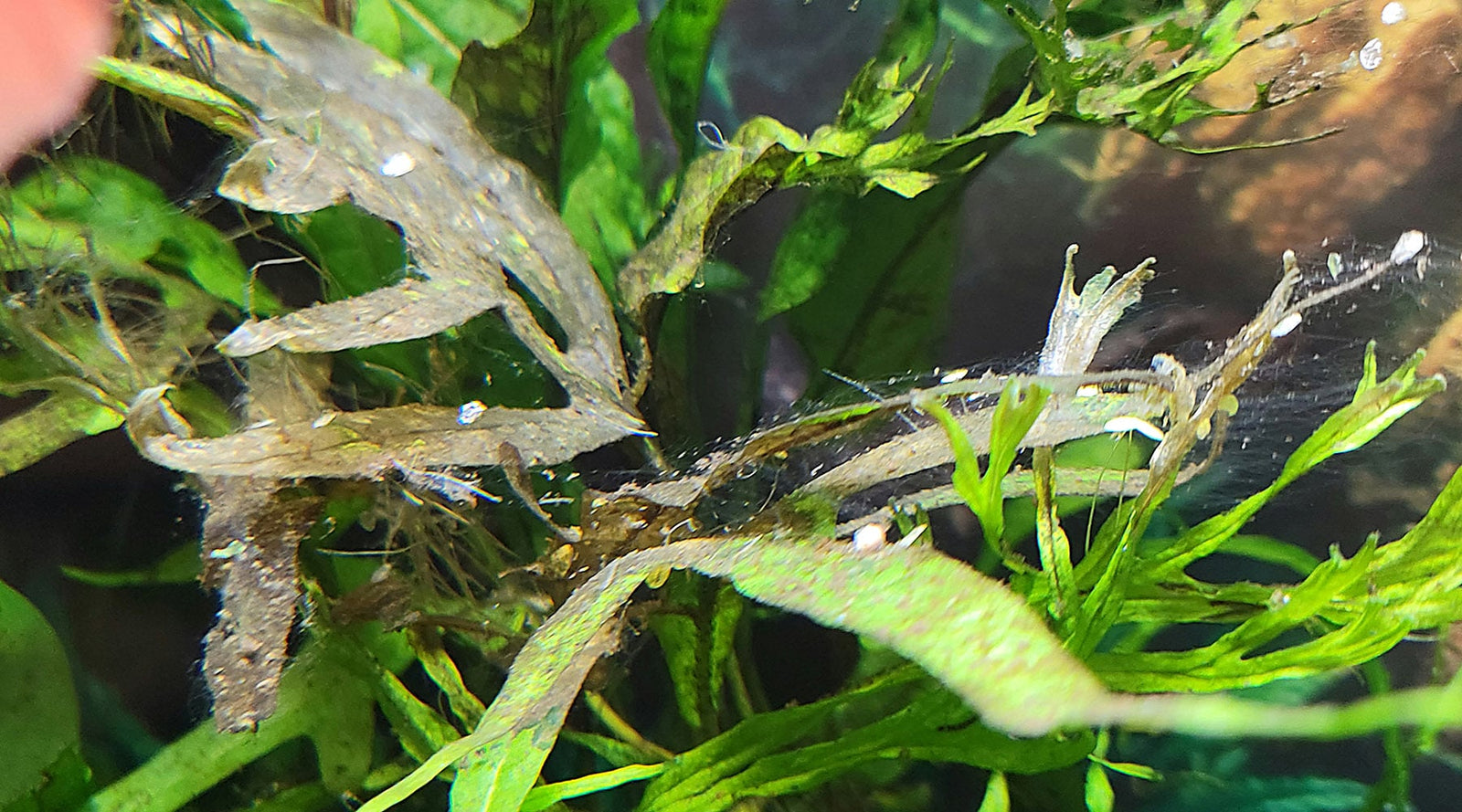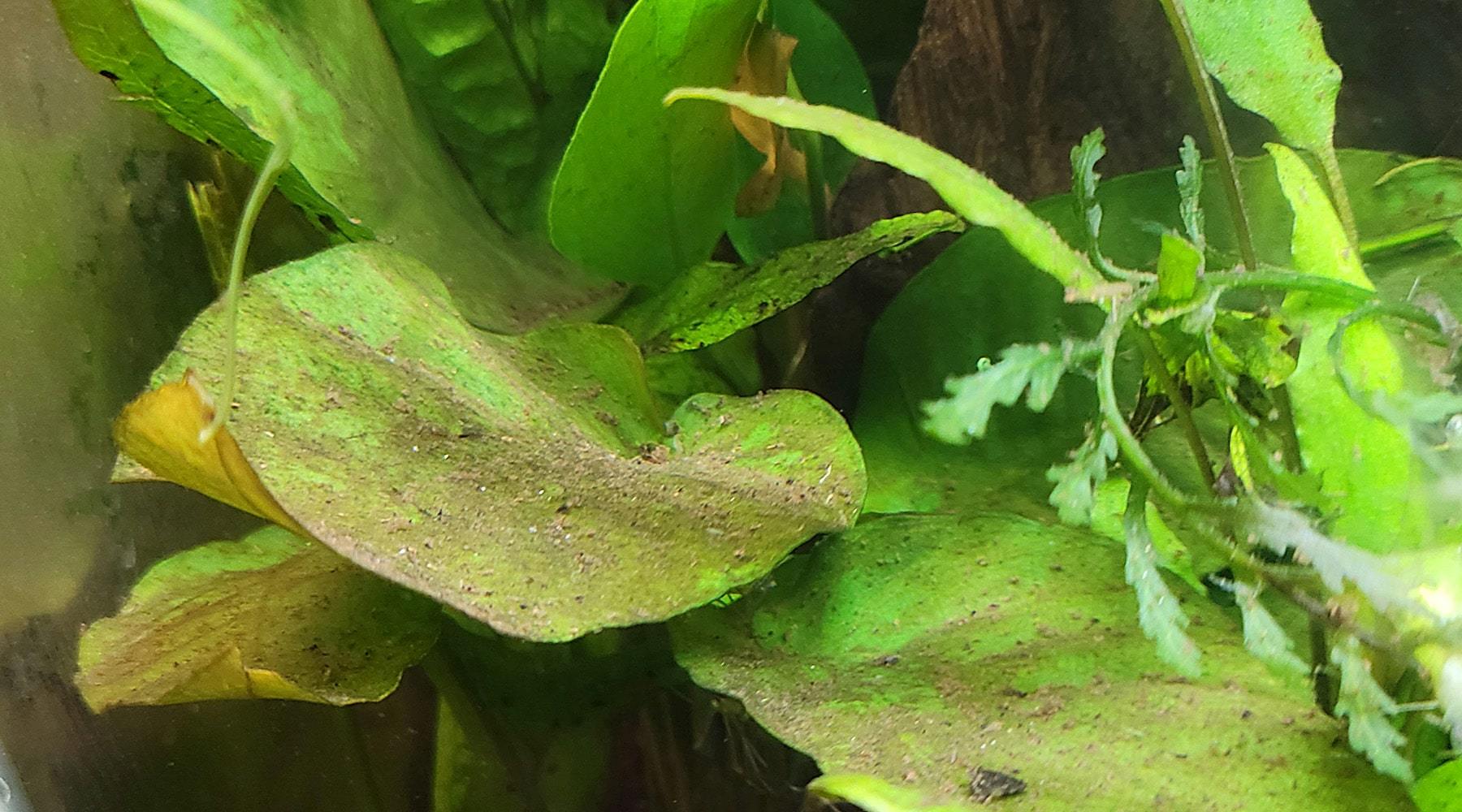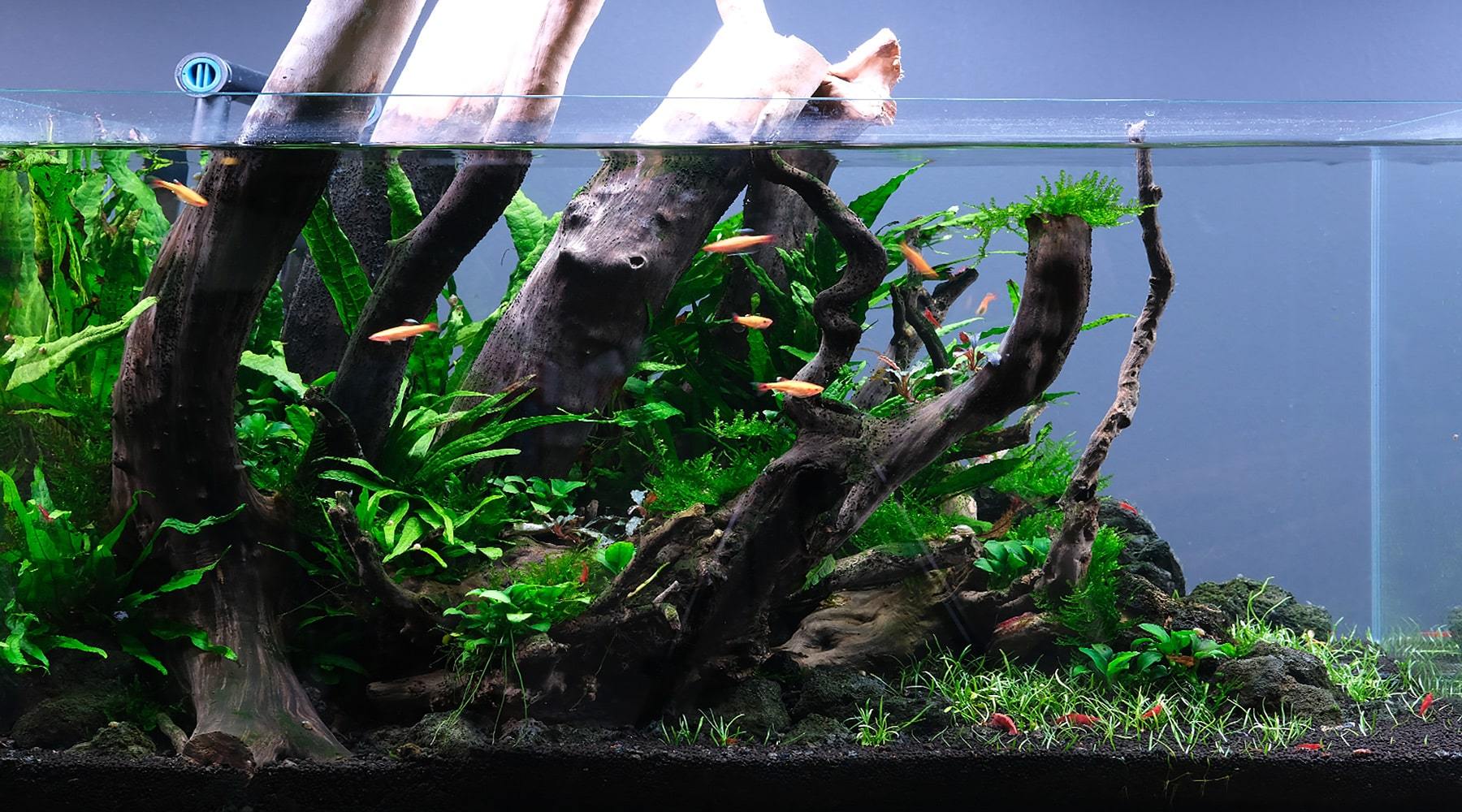
Above: Java Fern ‘melt’ ( courtesy of Tiffany P.)
Java Fern (microsorum pteropus) and Anubias barteri ‘nana’ are among the hobby’s most hardy plants.
They can thrive in both softwater and hardwater, and can take anything from high to very low amounts of light. They don’t need CO2 or substrate to grow well. Their tougher leaves make them less vulnerable to herbivore damage, and less susceptible to handling damage during transport and planting.
However, their external toughness belies several weaknesses.
When overlooked, it is easy to get leaves that covered with brown algae and/or blackened edges. These two species are also prone to displaying ‘sudden death’…where a plant that seems OK might suddenly turn yellow, transparent or even ‘melt’ away.
Above: a common occurrence on the leaves of Anubias (courtesy of Tiffany P.) As slow growers, both Java Fern and Anubias are especially vulnerable to the following:
- Fish waste. As slow growers, Java Fern and Anubias are more vulnerable to algae than faster growing plants. With an under-sized filter and infrequent housekeeping, detritus accumulates on their leaves. This feeds algae and often turn into an unsightly brown / black layer.
- Insufficient flow. Many tanks use overhang or ‘hang-on-back’ filters. These filters clog more easily by design, and many do not provide sufficient flow. Without enough water movement, detritus accumulates on the leaves. This serves as a food source for algae.
- Insufficient light. As shade plants, Java Fern and Anubias can survive with very low light. However, in a tank with floaters (read our previous article here), or taller plants / hardscape, it is easy to go below the minimum threshold without knowing it. If you observe very few or no new leaves, you may be giving too little light.
Sudden death?
As slow growers with tough leaves, Java Fern and Anubias often deteriorate ‘inside’ without showing decay.
This can come from prolonged shading (often due to floaters) or having algae-covered leaves which deprive them of light.
Then suddenly, with the addition of a new fertiliser or an intended improvement (water change, new equipment etc.), the plant collapses, leaving the hobbyist bewildered.
The causes of the ’sudden death’ have been building up for weeks or months, but due to their tough outer shells, these plants appear normal, until they reach a tipping point or a change in tank environment.
This is probably the most tricky thing about Java Fern and Anubias.
They grow and adapt very slowly.
Improvements in flow, lighting and nutrition take minimally a few weeks to show any visible impact. Similarly, bad conditions take weeks or months to be reflected in the plants.
This delayed response makes it one of the hardest aspects to navigate for beginners.
It is impossibly hard to remember what we had for lunch 2 days ago.
How much harder it is to recall what tank changes were made 3 weeks ago!
Above: a ‘low tech’ tank with a lively fish population and thriving Java Fern and Anubias plants. This tank requires very infrequent cleaning ( water change once every 2 weeks, glass that remains clear of algae) The secret? A large part comes from good flow, in this case a properly sized canister filter.
Regardless of your present equipment or tank setup, 3 things you can do:
- Regularly change water The 2Hr Way. Stir up and siphon away the detritus on the leaves.
- If you already have algae covered leaves, review lighting and remove the ones that are too badly decayed. APT FIX is an effective algae treatment for leaves that are still fundamentally healthy.
- If you are using a hang-on back, clean it more often to help with flow.
Finally, remember the delayed ‘cause and effect’ in these slow growers. Don’t expect improvements to be reflected immediately. It takes several weeks. And ‘looking OK’ may not mean ‘healthy’ or ‘happy’. Always look out for new leaves.
For more details, read our guide to Java Fern here and our article on keeping Anubias here.

